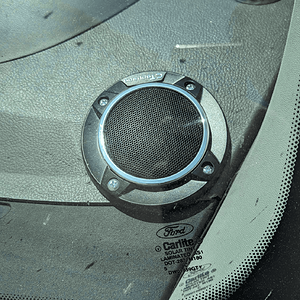Bellmeister
CarAudio.com Recruit
So, Im putting this up as a question but also to help the idk..millions of dudes like me that arent big hip hop boom boom sub guys.
Im into metal and I did a ton of research in the hopes of ending up with a tight bass pop for the double bass drums.I went with an 8" sub Skar SVR series. RP 1200 Watt Skar amp and Skar kerf ported box (if youre a metal head a sealed sub box is better than ported, more controlled tighter bass, I screwed the pooch there a little)
So, the sub is 400 RMS and the amp at 4 ohms is 500 RMS. You have to buy an active LOC for your system if going this route to add volume but 4 ohms is best as far as running coolest and better quality sound then 2 ohm or 1 ohm.
Now, the question at hand. And the tip for metal heads.
The Bass Boost on the amp. Yes the dreaded Bass Boost.
Everyone, everywhere tells you to leave it off. But you have bass boost and you have gain on your amp.
Bass boost boosts just low frequency (bass) while gain boosts all.
8" subs can see LPF setting up to 120hz-130hz cos it can play those higher ones if you want. I have mine at 75hz but use the Bass Boost cos I want the bass to be the main focus and the mid bass to just fill out the music.
So while I am giving this as advice to noob car stereo guys that like metal (cos it freakin works) Im also asking pros out there if this makes sense to you, turning gain down and turning bass boost (-6db) on for my particular set up and music tastes. Thanks
Im into metal and I did a ton of research in the hopes of ending up with a tight bass pop for the double bass drums.I went with an 8" sub Skar SVR series. RP 1200 Watt Skar amp and Skar kerf ported box (if youre a metal head a sealed sub box is better than ported, more controlled tighter bass, I screwed the pooch there a little)
So, the sub is 400 RMS and the amp at 4 ohms is 500 RMS. You have to buy an active LOC for your system if going this route to add volume but 4 ohms is best as far as running coolest and better quality sound then 2 ohm or 1 ohm.
Now, the question at hand. And the tip for metal heads.
The Bass Boost on the amp. Yes the dreaded Bass Boost.
Everyone, everywhere tells you to leave it off. But you have bass boost and you have gain on your amp.
Bass boost boosts just low frequency (bass) while gain boosts all.
8" subs can see LPF setting up to 120hz-130hz cos it can play those higher ones if you want. I have mine at 75hz but use the Bass Boost cos I want the bass to be the main focus and the mid bass to just fill out the music.
So while I am giving this as advice to noob car stereo guys that like metal (cos it freakin works) Im also asking pros out there if this makes sense to you, turning gain down and turning bass boost (-6db) on for my particular set up and music tastes. Thanks


